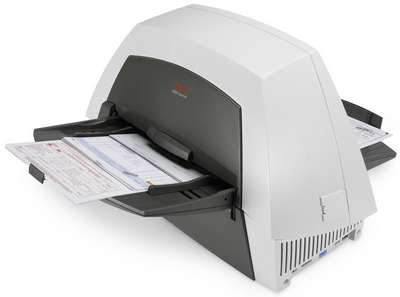 (c) Neil Folberg / Abbeville Press, 2008
(c) Neil Folberg / Abbeville Press, 2008
30/01/08
Night Photography of Israel by Neil Folberg
29/01/08
David Rubinger, Israel Through My Lens
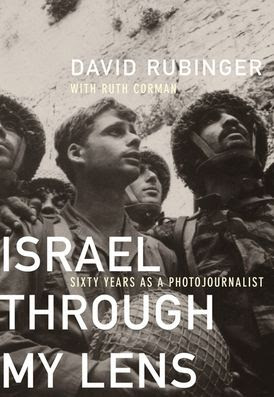 (c) David Rubinger / Abbeville Press, 2008
(c) David Rubinger / Abbeville Press, 2008
"As a photographer, David Rubinger has captured some of the most powerful images of his time. No one has done a better job of showing the history of Israel in all its glory and pain. The stories behind those photographs and the people he has met are utterly captivating, but as it turns out, no story is more fascinating—or more poignant—than that of his own life.” — Jim Kelly, Managing Editor of Time, Inc. Today, photojournalist DAVID RUBINGER stands at the peak of his profession. A winner of the Israel Prize for services to the media and a fixture on the masthead of Time magazine, he is the only photographer whose work is on permanent display at the Knesset, Israel’s legislature. ISRAEL THROUGH MY LENS: Sixty Years as a Photojournalist is the illustrated autobiography of this accomplished photojournalist, written in a conversational and immediate tone that captures the drama of his life and times. David Rubinger and his coauthor Ruth Corman, a British photographer and curator, report his gripping life story in this fascinating volume, which in many ways reflects the history of Israel that he has recorded so faithfully with his camera. Born in Vienna in 1924, he emigrated to British Palestine in 1939 and developed a passion for photography while serving in the British army’s Jewish Brigade. After fighting in Israel’s War of Independence, he became a professional news photographer, reporting on each of his young nation’s subsequent wars from the front lines, first for the Israeli media and later as a correspondent for Time–Life. With a foreword by Shimon Peres, current president and former prime minister of Israel, ISRAEL THROUGH MY LENS comprises a chronological narrative of Rubinger’s life and the stories he covered. Rubinger has photographed all of Israel’s leaders, many of whom have allowed him a remarkable degree of access to their lives. Former Israeli Prime Minister Ariel Sharon said, “I trust Rubinger even though I know he doesn’t vote for me.” But Rubinger has not confined his reporting to war and politics; by photographing the successive waves of Jewish immigrants from Europe, the Arab world, Russia, and Ethiopia, he has also created a valuable record of Israel’s transformation from a country of six hundred thousand to one of seven million. In recounting his eventful career, Rubinger proves himself a gifted raconteur, sharing anecdotes of the many personalities he has photographed and telling the stories behind his most famous pictures, many of which are reproduced here at full-page size. The 130 photographs in the book include not only his best news photos but also hitherto unpublished shots from his family album that let us see behind the scenes of a photojournalist’s work. With ISRAEL THROUGH MY LENS’s 7-by-10 inch trim, the book is small enough to carry with you and read, but big enough to show off Rubinger’s pictures to good effect. Over the course of Rubinger’s career, which he spent mostly with Time and Life magazines, he personally witnessed nearly every important event in his country’s history, from the Suez Crisis to the Intifadas, and knew all of its leaders, from David Ben-Gurion to Ehud Olmert. ISRAEL THROUGH MY LENS is as much a firsthand account of Israel’s history as it is a memoir of an important journalist’s career, and its publication should be welcomed by everyone with an interest in photojournalism or the history of Israel. RUTH CORMAN, the coauthor, is a London-based photographer, art consultant, and curator, as well as the former director of the British Israel Arts Foundation. She has organized many exhibitions in Britain and Israel, including two shows of David Rubinger’s photography. Table of Contents from Israel through My Lens, by David Rubinger with Ruth Corman Foreword by Shimon Peres 1. How It All Began 2. The Early Years in Europe 3. Leaving for Eretz 4. A Soldier for King George 5. The Marriage 6. My First Love Affair—with the Camera 7. Married Life and Becoming an Israeli 8. After the War of Independence 9. My Career Begins 10. Haolam Hazeh 11. Home Life 12. Yedioth Ahronoth 13. Ben-Gurion 14. Immigration 15. My Beginning with Time-Life 16. The Sinai War 17. Taking to the Skies 18. Papal Visits 19. Teddy Kollek 20. The Six Day War and After 21. The War of Attrition 22. The Yom Kippur War 23. Sadat and Begin 24. Air Power Stories 25. Becoming an Austrian Citizen—Again 26. Immigration from Russia and Ethiopia 27. Football and the Lebanon War 28. Rubber Bullet 29. The Second Intifada and the Settlements 30. Some Special People 31. Travels Abroad with My Camera 32. My Life in the Movies 33. Influences on My Career 34. My Archives 35. House and Home 36. My Marriage to Anni 37. The Evening of My Life 38. The Renaissance Afterword and Acknowledgments by Ruth Corman Chronology Index ISRAEL THROUGH MY LENS: Sixty Years as a Photojournalist By David Rubinger with Ruth Corman Foreword by Shimon Peres Abbeville Press, New York January 2008 336 pages - 130 illustrations, 43 in full color $35.00 cloth ISBN 978-0-7892-0928-3 Also published by Abbeville Press: IN A DESERT LAND Photographs of Israel, Egypt, and Jordan Text and photography by Neil Folberg Abbeville Press, New York 204 pages - 200 full-color illustrations $49.95 cloth ISBN 978-0-7892-0125-6 PHOTOJOURNALISM 1855 TO THE PRESENT: EDITOR’S CHOICE By Reuel Golden Abbeville Press, New York 256 pages - 250 illustrations, 64 in full color $45.00 hardcover ISBN: 978-0-7892-0895-8 Last modified: September 24, 2009
Nikon PC-E Nikkor 24mm f/3.5D ED
Wide-angle NIKKOR lens with Perspective Control
- Wide shifting and tilting range (shift: ±11.5mm; tilt: ±8.5°)
- ±90° lens revolving capability for versatile tilt/shift effects
- Maximum reproduction ratio of 1/2.7 (at 0.21m)
- Three ED-(Extra-low Dispersion) glass elements provide superior sharpness and colour correction by effectively minimizing chromatic aberration
- Three aspherical lens elements minimize various types of lens aberration
- Nano Crystal Coat virtually eliminates internal lens element reflections, effectively reducing ghosting and flare
- High-performance Nikon Super Integrated Coating delivers superior colour reproduction while substantially reducing ghosting and flare
- Rounded nine-blade diaphragm for more natural appearance of out-of-focus image elements
- Lens aperture can be preset using an aperture ring and the aperture stop-down button
- Auto aperture control with electromagnetic diaphragm is possible with the Nikon D3 and D300
Nikon AF-S Micro Nikkor 60mm f/2.8G ED
Nikon’s new 60mm lens featuring a built-in Silent Wave Motor
- Nikon’s exclusive Silent Wave Motor (SWM) ensures fast, quiet autofocus operation
- Internal Focusing (IF) design allows faster, smoother autofocusing and eliminates changes in lens barrel length for consistent handling
- Two aspherical elements virtually eliminate coma and other types of lens aberration, even at the widest aperture
- M/A mode allows rapid switching between autofocus and manual focusing
- ED (Extra-low Dispersion) glass element for superior sharpness and colour correction by effectively minimizing chromatic aberration
- Nano Crystal Coat and high-performance Nikon Super Integrated Coating delivers superior colour reproduction, while substantially reducing hosting and flare
- Closest focus distance of approximately 0.185m
- Rounded nine-blade diaphragm opening causes out-of-focus objects to appear more natural
- Accepts 62mm filter attachments
Nikon Lens AF-S DX NIKKOR 16-85mm
Compact 5.3x zoom DX-NIKKOR lens with SWM and VR II
Nikon's AF-S DX NIKKOR 16-85mm wide ratio zoom lens featuring Silent Wave Motor (SWM) and Nikon’s Vibration Reduction (VR) II is an ideal lens for an extensive range of shooting scenarios, including indoor-outdoor events, streetscapes, portraits and scenery. When mounted on any DX-format Nikon digital SLR camera, the picture angle is equivalent to a 24 to 127.5mm focal length in 35mm format.
The ultra-compact SWM built into the lens body ensures fast, quiet and accurate autofocus operation and complements the compact, lightweight design for superb handling. With dimensions of only Ø72 x 85mm, this new lens is ideal for general photography or specialists in travel and nature photography.
Nikon's VR II, specifically engineered for each NIKKOR lens, provides photographers with the ability to shoot at shutter speeds up to four stops* slower than would otherwise be possible, minimizing image blur caused by camera shake. This enables dramatically sharper handheld shooting at dusk or at night, or even in poorly lit interiors. Nikon’s VR function is incorporated and designed specifically for the lens, it provides state-of-the-art image sharpness capacity and a stable viewfinder image for accurate framing.
*As determined in Nikon performance tests
The new high-performance optical system has been optimized for Nikon digital SLRs. Two ED glass elements and three aspherical lenses deliver higher resolution, high-contrast images while minimizing chromatic aberration. A rounded seven-blade diaphragm opening gives out-of-focus background elements a more natural appearance. Nikon’s Super Integrated Coating ensures outstanding colour balance and reproduction while greatly reducing ghosting and flare.
The AF-S DX NIKKOR 16-85mm f/3.5-5.6G ED VR II is a significant addition to Nikon’s DX-NIKKOR lens line-up and is certain to become a favourite of photographers seeking a wide-ratio zoom with exceptional wide-angle capability and a telephoto perspective ideal for portraiture.
Notes:DX-NIKKOR lenses are engineered and optimized for use on Nikon DX-format and FX-format digital SLR cameras. When mounted on an FX-format digital SLR, the camera’s DX-Crop Mode is automatically engaged, altering the image capture area accordingly. DX-NIKKOR lenses are not compatible with 35mm [135] or IX240 [APS] format film cameras.
AF-S DX NIKKOR 16-85mm f/3.5-5.6G ED VR II Features Highlights- 5.3x zoom lens covering a wide focal range of 16 to 85mm (picture angle is equivalent to focal length of 24 to 127.5mm in 35mm format)
- Vibration Reduction II enables sharper pictures while shooting at shutter speeds up to four stops slower than would otherwise be possible (as determined in Nikon performance tests)
- Optical design optimized for superior performance with Nikon digital SLRs
- ED (Extra-low Dispersion) glass elements minimize chromatic aberration while providing higher resolution and superior contrast
- Three aspherical lens elements minimize various types of lens aberration
- High-performance Nikon Super Integrated Coating achieves superior colour reproduction while substantially reducing ghosting and flare
- Nikon’s exclusive Silent Wave Motor (SWM) ensures fast, quiet autofocus operation
- Rounded seven-blade diaphragm opening makes out-of-focus elements appear more natural
- 0.38m closest focus distance throughout the entire zoom range Accepts 67mm filter attachments
Compact Nikon COOLPIX S210
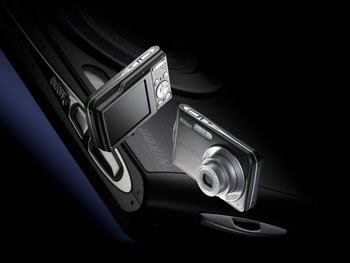
Avec son design intuitif et compact, son moniteur ACL 2,5 pouces de 230 000 pixels, son objectif NIKKOR, et son système de réduction de vibration VR, le COOLPIX S210 conjugue performance et puissance technologique dans un style élégant à un prix tout à fait abordable. Successeur du COOLPIX S200 vendu à plusieurs millions d'exemplaires dans le monde, le COOLPIX S210 offre une définition de 8 millions de pixels dans un boîtier fin et élancé (18 mm), capable de tenir aisément dans la main et dans la poche. Il est doté d'un zoom 3x (38–114 mm).

Les photos réalisées sont aussi éblouissantes que l'appareil lui-même, dont la finition en aluminium est très élégante. En outre, le COOLPIX S210 offre des fonctions d'amélioration de la qualité d'image et de la vitesse de traitement, grâce au système intégré de traitement d’image EXPEED de Nikon. Il dispose d'une plage de sensibilités jusqu'à 2000 ISO et d'un mode de sélection automatique du réglage de sensibilité optimale dans des conditions de faible lumière. Il propose, en outre, une nouvelle fonction plus efficace de reconnaissance des visages pour une mise au point rapide et intelligente lors de la réalisation de portraits.
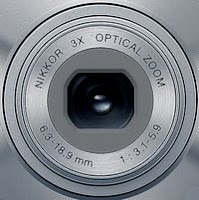
Disponible en Argent, Noir Ébène, Bleu Électrique, Rose Sakura ou Rouge Cerise, il sera proposé à un prix très abordable dès le mois de mars 2008.
Nouveaux compacts Nikon Coolpix Serie S : Coolpix S600, S550, S520 et S210
Nikon présente quatre compacts numériques de la gamme COOLPIX S. Les nouveaux COOLPIX S600, S550, S520 et S210 intègrent le système de réduction de vibration VR de Nikon.
Parmi les plus compacts de leur catégorie, ils offrent en plus des vitesses de démarrage ultra-rapides et de nouvelles fonctions d'aide à la prise de vue. Pour obtenir un sourire parfait lors de l'immortalisation d'un moment précieux, la fonction « Détection des Sourires » reconnaît automatiquement si votre sujet sourit ou non. Une autre fonction, le mode « Enfants en mouvement », permet à l’appareil de suivre le déplacement d’un enfant même s’il bouge rapidement.
- Ensemble des Compacts Nikon
Compact Nikon COOLPIX S600
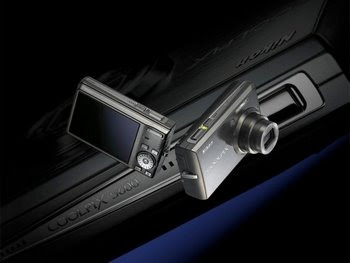
Reflex numerique Nikon D60
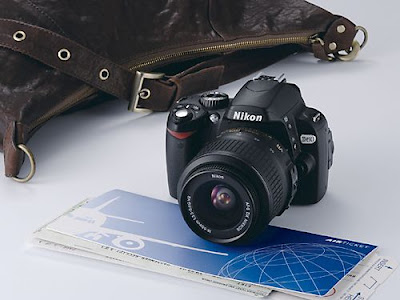
Avec 10,2 millions de pixels, le capteur d'image du D60 produit des images d'excellente qualité. L'avantage d'un capteur de cette dimension est qu'il est possible de produire de grandes impressions, même après recadrage de la photo. Et grâce à EXPEED, le système exclusif de traitement d’image développé par Nikon, les images offrent des détails très fins et une restitution naturelle et homogène des tons.
Système anti-poussière intégré
Le système de contrôle du flux d'air utilisé dans le D60 dirige l'air à l'intérieur de la chambre reflex vers de petits conduits situés près de la base, éloignant la poussière du capteur d'image. La fonction de nettoyage du capteur d'image limite également l'accumulation de poussière à proximité du capteur grâce à des vibrations spécifiquement définies. Celles-ci sont activées soit automatiquement soit à la demande de l'utilisateur. Ce panel de solutions anti-poussière permet à l'utilisateur de changer d'objectif en toute confiance.
Fonction « D-Lighting actif » pour des dégradés plus homogènes
La nouvelle fonction « D-Lighting actif » du D60 permet d'ajuster l'aspect final de l’image au moment de la prise de vue. Ce processus automatique, qui fonctionne à la fois sur les hautes et les basses lumières, compense les conditions de faible luminosité et optimise l'exposition avec des détails riches et homogènes.
Commandes simples et intuitives dans un boîtier compact
Le D60 n'est pas seulement compact. Son format ergonomique s'adapte très bien à la forme de la main pour un excellent confort d'utilisation. Son boîtier s'inspire du design de la très renommée gamme D40 de Nikon.
Clair et lumineux, le viseur garantit une grande précision de composition, tandis que son moniteur ACL de 2,5 pouces affiche un système convivial de menus et une visibilité sous tous les angles. Ainsi, l’utilisateur peut naviguer dans les options et regarder les images en toute simplicité. La nouvelle fonction de détecteur oculaire désactive le moniteur ACL lors de l’utilisation du viseur.
Menu Retouche
Le menu Retouche du D60 offre de nombreuses fonctionnalités exclusives intégrées pour l'édition des images. L'option Filtre permet à l’utilisateur d'intensifier une couleur (rouge / vert / bleu) de son choix. De plus, la fonction Filtre étoiles génère des formes étoilées d'objets lumineux de l'image. Un traitement NEF (RAW) intégré est également disponible. Les images au format RAW sont « développées » à l'intérieur même de l'appareil après la prise de vue. Il est ainsi possible de régler différents aspects des images, tels que la qualité, le format ou la balance des blancs. Grâce à la nouvelle fonction Film d'animations (« Stop Motion »), l’utilisateur peut créer un petit film d'animations (lecture consécutive d'images fixes) à partir d'une séquence de photos (au format JPEG). Le D60 intègre également l'option Retouche rapide. Pratique, elle permet d'améliorer le contraste et la saturation pour optimiser les images sans l'aide d'un ordinateur.
Début de commercialisation : Mars 2008
Pour plus d'informations, visitez http://www.nikon.fr/
28/01/08
FetArt aide les jeunes photographes
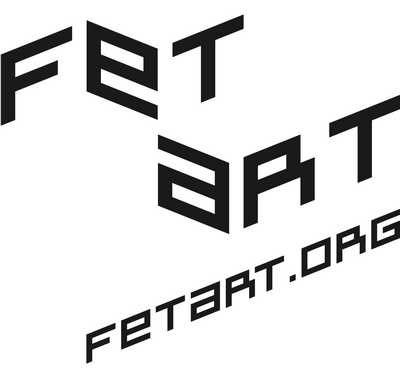
- Coordination des expositions : Audrey Turpin
- Relation avec les artistes : Laetitia Guillemin
- Direction artistique/PrivArt : Marion Hislen
- Relation presse : Jade Moyez
- Portraits d’artistes/Vidéo : Carine Dolek
- Présidente : Marion Hislen
- Trésorier : Pierre Ulmer
24/01/08
Compact Canon Digital Ixus 80 IS
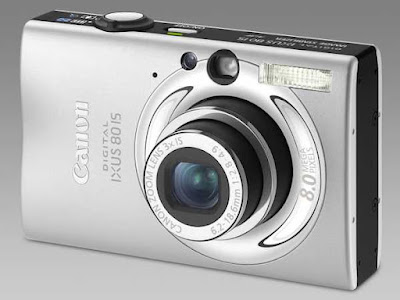
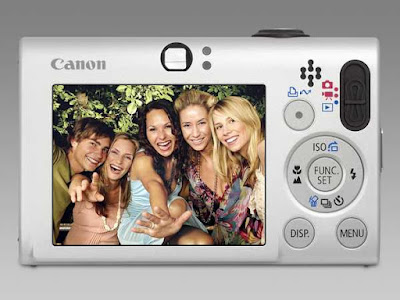
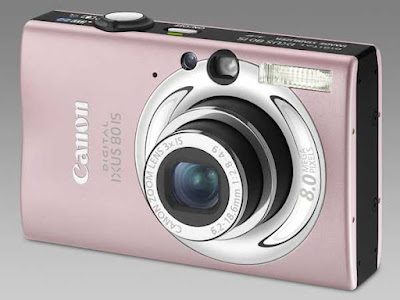
Compact Olympus µ [mju] 850SW
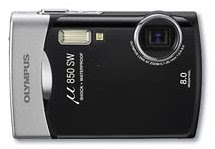
- Des prises de vue très intéressantes dans l'eau, étanche jusqu'à 3 m*** de profondeur
- Prenez-le n'importe où, n'importe quand, antichoc jusqu'à une hauteur de 1.5 m****
- Une mise au point et une exposition de visage parfaitement grâce à la technologie de Detecion de visage.
- En combination avec la technologie Shadow Adjustment (ajustement des zones d'ombre) toutes les parties de l'images sont parfaitement exposées.
- Ecran LCD HyperCrystal 6.4cm/2.5" avec un affichage lumineux même en plein soleil et dans les positions les plus extrèmes (230,000 pixels)
- Stabilisation d'image numérique (jusqu'à 1 600 Iso) pour réduire les floues
- Technologie BrightCapture pour de superbes images même dans des conditions de faible luminosité. Le meilleur des compagnons pour la saison hivernale
- 8 Mégapixels pour faire des impressions au format poster si vous le souhaitez
- Zoom optique 3x (équivalent à 38-114mm*) pour capturer de magnifiques portraits
- 24 modes Scène (exemple : Plage et Neige, Sous marin, Grand angle et macro) qui permettent à l'appareil photo d'optimiser les meilleurs réglages pour différentes situations photographiques
- Garder vos souvenirs en mémoire grâce à la fonction Vidéo avec son (jusqu'à 30 images secondes en résolution VGA)
- Processeur d'image TruePic III pour un traitement d'image plus rapide et une qualité plus élevée
- Prises de vue sous marines jusqu'à une pression équivalente à 40 m de profondeur possible avec le caisson étanche PT-041 en option
Un modèle résistant pour chacun
Etanche à 3m *, antichoc 1.5m ** et résistant au froid -10°C, le µ-850 SW prend quelque coup.Ses 8.0 Mégapixels assure un rendu photographie excellent, son écran LCD de 2.5"/6.4cm HyperCrystal affichage à vos cadrages et prises de vue avec netteté. Equiper d'un zoom optique 3x (équivalent 38-114mm) les utilisateurs apprécieront les nombreuses possibilités photographiques.Les technologies avancées comme la détection de visage, l'ajustement des ombres, et le BrightCapture permet une exposition et une mise au point parfaite de vos prises de vue. même en basse luminosité.
De plus, la stabilisation d'image numérique évite les images flous dû au bougé de l'appareil photo. Le mode macro est également amélioré grâce à un éclairage interne d'appoint.
Le µ-850 SW est disponible en torois coloris : Silver, noir, et rose.
Un large choix de 38 langues permet de satisfaire les photographes du monde entier et d'utiliser les menu d'aide avec sa langue maternel.
Et pour finir, cet appareil associé avec le caisson étanche PT-041 (en option) de prendre de photo sous-marine jusqu'à 40 m de profondeur.
Disponible depuis janvier 2008* Equivalent en 35mm
** selon publication standard IEC 529 IPX8
***Tout temps équivalent à la norme IEC standard publication 529 IPX4
****Equivalent au standard MIL (Condition test Olympus)
23/01/08
Pentax K20D Digital SLR
- A PC Sync socket for shooting with studio lights. The camera remains weather and dust sealed even when the PC socket cap is removed.
- Choice of 16-segment multi-pattern metering, center-weighted metering and spot metering to accommodate various photographic applications
- Reliable, durable shutter unit assuring more than 100,000 shutter releases
- High-rigidity stainless-steel chassis
- 36 custom functions to personalize camera operations
- Universal-type X-sync socket
- RAW button for single-action image-file switching
- Digital Preview for verifying camera settings
- Optional Battery Grip (D-BG2) for extended shooting sessions
- Nine digital filters to add creative and artistic touches
- In-body RAW data development for image filing in JPEG and TIFF formats
- Compatibility with SDM equipped lenses for quiet, extra-smooth autofocus operation
- Pentax Photo Laboratory 3, RAW data processing software, Pentax Photo Browser 3, browser software and Pentax Remote Assistant 3, camera control software, included on the accompanying CD-ROM
Pentax, and smc Pentax are trademarks of Pentax Corporation - Pentax Photo Laboratory, Pentax Photo Browser, Pentax Remote Assistant, and SDM are trademarks of Pentax Corporation - All other brands or product names are trademarks or registered trademarks of their respective companies - Designs and specifications are subjects to change without notice
22/01/08
Olympus digitalkamera µ 840 - Hovedfunksjoner
Skarpskytteren µ 840 er en fryd for øyet. Det flotte metallkameraet fås i fargene stjernesølv, midnattssvart, havblått og sukkertøyrosa og har hele 5x optisk zoom og 8 megapiksler. Når du skal ta spennende nærbilder, gir SuperMakro-funksjonen liv til imponerende overflatedetaljer. Veiledende utsalgspris er satt til kr 2290,-.
- 5x optisk zoom (36-180 mm*)
- 2,7”/6,9cm HyperCrystal-LCD skjerm [1]
- 20 sceneinnstillinger for best mulig resultat i ulike situasjoner
- 8 megapiksler
- Elegant metallkamera som fås i fire ulike farger: stjernesølv, midnattssvart, havblått og sukkertøyrosa
- Klare bilder med dobbel bildestabilisator [2]
- Ansiktsgjenkjenningsteknologi [3] for optimalt fokuserte og eksponerte ansikter samt korrekt eksponering for andre bildefelt
- SAT skyggejustering for flere detaljer i motiver med høy kontrast
- Bedre bilder i mørke omgivelser med BrightCapture-teknologi [4]
- Ny enklere panoramafunksjon
- Filmopptak med lyd (opptil VGA-løsning ved 30 bps)
- TruePic III-bildeprosessor [5] for raskere bildebehandling og bedre bildekvalitet
Plass for xD minnekort. Sammen med kameraet følger også adapter for bruk av MicroSD minnekort.
*Tilsvarer et 35 mm kamera
[1] HyperCrystal20/01/08
PhotoAcute Studio 2.7 provides focus stacking functionality
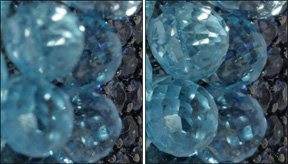
PhotoAcute Studio, the cutting edge software product for enhancing digital photos quality, now provides focus stacking functionality, allowing to take high-quality images with extended depth of field, with all the scene details in focus.
Depth of field is a range interval in front of a camera, within which the photo appears sharp. The classic way to extend depth of field is to take images using a narrow lens aperture. This solution has two serious disadvantages. Small apertures bring more light diffraction, degrading the image resolution and they reduce the light transmission, forcing the use of longer exposures, which leads to motion blur in the pictures. Also, even using the smallest aperture is sometimes not enough to capture the entire scene sharply.
The alternative way is to take several frames of the same scene at different points of focus. Each of these images has its own depth of field and they can be merged together, combining focused areas of each image and producing a resulting image with cumulative depth of field. This technique is known as "focus stacking".
Increasing the depth of field allows getting the images, which cannot have been captured even by advanced camera and lens. Using this technique is essential in macro photography and microphotography as well as in all situations when the very near and very far objects in the scene have to be captured acutely.
PhotoAcute Studio, the application that increases image resolution beyond the camera capabilities by merging several photos of the same scene, now provides focus stacking functionality. The application processes the images of the same scene taken at different points of focus and automatically produces resulting image with a greater depth of field than any of the source images has.
PhotoAcute Studio is able to merge misaligned images, compensating the scene movement, rotation and scaling. This allows processing the images taken without using a tripod. It is also able of merging the images taken at varied exposures.
PhotoAcute Studio supports variety of image formats, including RAW, DNG and TIFF.
Providing focus stacking functionality, PhotoAcute Studio becomes all-in-one tool for processing continuous photos, which increases image resolution, depth of field and dynamic range, and reduces noise, chromatic aberrations and geometry distortions.
PhotoAcute Studio runs under Windows, Mac OS X and Linux. Its user interface is quite simple and allows performing image processing in a couple of clicks.
Detailed description of PhotoAcute Studio features, online help and examples gallery are available at http://www.photoacute.com/
PhotoAcute Studio 2.7 is available for free in trial mode. The price of the full version varies depending on supported camera types: starting from $49 for consumer cameras to $119 for DSLR cameras with the support of RAW format and 16-bit color. Users can get free licenses by contributing to PhotoAcute Studio development.
About Almalence Incorporated Almalence Incorporated focuses on developing the cutting-edge methods of digital image processing and innovative software products for enhancing digital images. Our mission is to provide the photographers with the software tools that will help them to achieve the best image quality. The company was founded in 2005 by the group of professionals with strong background in computer science, software engineering and management.
Almalence Inc. - Press Release - 20.01.2008 - Photo (c) Almalence Inc.
18/01/08
Paul Goldman Photographs of the Birth of Israel

“We could think of no better way to honor the birth of the State of Israel than by showing the powerful images of its struggle and its triumphs,” Museum director Dr. David G. Marwell said. “The title of this exhibition is taken from the words of the Israeli national anthem, Hatikva, and captures the fervent dream of the Jewish people to have their own state.”Highlights of the exhibition include more than 35 images culled from a collection of negatives that lived in a shoebox until they were rediscovered in recent years. The photos are on loan to the Museum from the collection of Spencer M. Partrich. The exhibition will feature such inspiring images as the one of future Israelis toiling the land of a Kibbutz in 1943; and heartbreaking images such as one of Holocaust survivors arriving at a detention camp in 1945. Goldman, born in 1900, fled Budapest in 1940 to escape the spreading threat of Nazism. He worked as a freelance photographer for local newspapers and international news services during the 1940s and 1950s. His role as a member of the British Army, and later as a confidant to important Israeli leaders, provided him with privileged access and a frontrow view to Israel’s growing pains. Unfortunately, Goldman’s eyesight failed him in the early 1960s — he died penniless at the age of 86 in Israel. Sadly, he never was able to see Israel’s physical beauty beyond her adolescence.
16/01/08
Scanners Kodak Serie i1400
